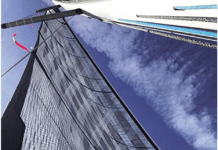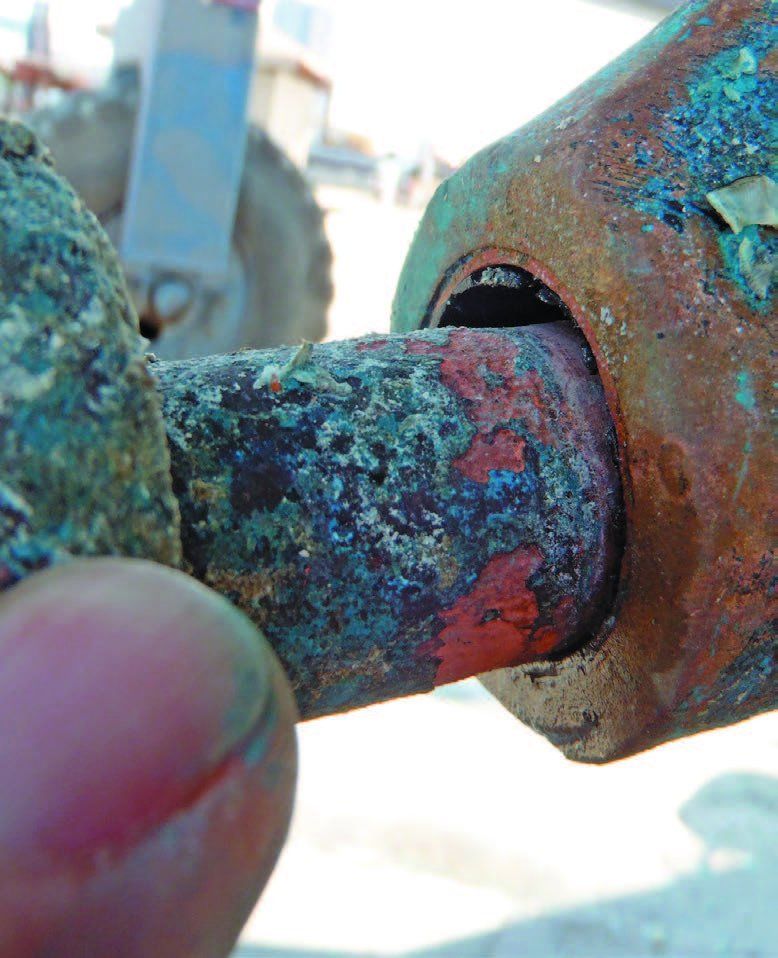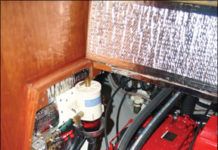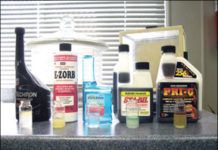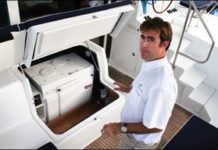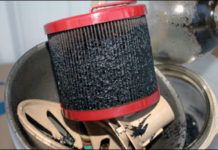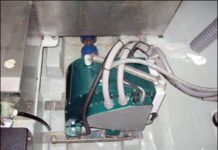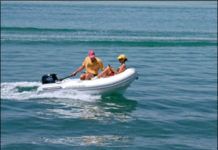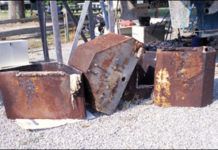Mailport: 12/09
I have a Pearson Ensign 1962 now at a slip in New Rochelle, N.Y. This season marked the first time we had the luxury of keeping our boat at a slip. In order to maneuver through the marinas byways without worrying, I bought a 24-volt Minn Kota outboard (80 pounds of thrust) and two 12-volt batteries, which I hook up in series. Not only am I able to stop start, turn, etc., in the marina, but-to my surprise-in the calm sound water, I can nip along at about 3-4 mph with myself, two crew, and the 3,000-pound boat. The result is that Ive only used my 5-horsepower Mercury outboard once this year. My electric outboard doesn't stall; it has variable speed like no ones business; reverses with relative ease, and is less expensive-though more cluttered-than the self-contained electric outboards you recently reviewed. Am I part of a growing trend or just weird? If the former then it might be worthwhile testing electric outboards for boats my size (22.5 feet) and commenting on their applicability.
PS Advisor: Synthetics for Marine Diesels?
Mobil 1 extended performance oils for automobiles are advertised as providing engine protection and performance at extended intervals of up to 15,000 miles or one year, whichever comes first. Its 5W-40 Turbo Diesel Truck oil meets American Petroleum Institute (API) standards for diesel truck lubrication, and except for the price ($5-$8 per quart, or three times the price of conventional multi-grade oil), would seem to be an attractive option for ocean voyagers who might otherwise have to carry out an oil change at sea. However, the official party line at Mobil 1, as we expected, is that you should defer to your manufacturer’s recommendation on oil type, weight, and service ratings appropriate for your engine. Typically, if an engine maker does certify the use of a high-mileage oil, it is in combination with routine sampling of the oil to determine its condition.
Best Ethanol Fuel Treatment for Boat Engines
Since the introduction of ethanol fuels at dockside pumps, weve had a slew of reader inquires about the effects of E-10 on fuel lines, fuel tanks, two-stroke engines, and four-stroke engines. We recently tested some products designed to address these issues, specifically those that claim to combat the problems associated with phase separation in E-10. Practical Sailor tested: E-Zorb from Marine Development Research Corp. (MDR), Sta-bil Marine Formula Ethanol Treatment from Gold Eagle, PRI-G from Power Research Inc., Star Tron from Star brite, and Techron from Chevron. The claims of each product varied, but the test products fell into one of these general categories: conventional fuel storage additives, ethanol fuel storage additives, and restorative gas additives. Our tests looked at whether the additive itself would leave ash deposits, gum deposits, or residue that might cause contaminated lubrication oil; whether an additive had a tendency to emulsify, suspend, or absorb free water; and whether the additives could delay the onset of cooling-induced phase separation.
Electric and Hybrid Propulsion for Sailboats
How soon will electric auxiliary engines be available to all sailboat owners? Opinions differ on what type of drive system could surge to the forefront and whether the concept of electric propulsion itself is viable in recreational sailboats. Opinions also differ as to what system is best: a pure diesel-electric drive train with a hybrid-electric drive with a diesel generator as a back up or a pure electric drive with regeneration capability. Practical Sailor talks with companies developing DC motors, including ASMO Marine, Above the Waterline, Vetus Marine, Electric Marine Propulsion, Glacier Bay, Re-e-power, Polar Power Inc., Fischer Panda, and Solomon Technologies. Glacier Bay is concentrating on diesel-electric drives using Ossa Powerlite technology, and ASMO Marine is developing the Thoosa line of DC motors. Much of the movement toward electric motors is taking place in the catamaran world, with Lagoon Catamarans leading the push. Corsair Marine is working on a diesel-electric catamaran, and Maine Cat has also experimented with electric engines. Duffy Electric Boats has for years been building electric-drive-only auxiliary engines. One major issue in developing these systems is the safety of high-voltage DC. ABYC has yet to set a standard for high-voltage DC safety aboard a vessel, and Jim Nolan of BoatUS said there is no clear-cut guidance regarding insuring boats with electric propulsion.
Fuel Filtering Systems
I am the new owner of a 1979 Tayana Vancouver 42 with a Volvo D2-55B diesel engine installed in 2004. Fuel is held in two 80-gallon fiberglass tanks and filtered via a Racor 500 utilizing No. 2010 filters. I use 2-micron filters and Biobor JF Anti-Fungal additive. Despite fuel scrubbings, I continue to have to change primary fuel filters with each fueling. I have been told that I don't need as fine a filter as the 2-micron, but I don't want to risk increased maintenance of the diesel. What do you recommend?
Practical Sailor Tests Manual and Electric Outboard Engine Brackets
We used a four-stroke Honda BFP 9.9 horsepower outboard (92 pounds) and a Mercury ME 9.9 (84 pounds) four-stroke to test eight engine brackets that can be used on sailboats. Testers figured the 9.9 engines to be the middle road between the commonly used 5 horsepower and 25 horsepower. Five manufacturers responded-Fulton, Garelick, Marine Tech (Panther), JR Marine, and Garhauer-with eight different brackets, four manual and four electric, all rated for four-stroke 9.9 engines. The main test criteria were ruggedness, quality of materials and workmanship, ease of assembly and mounting bracket on a boat, clarity of instructions, ease of mounting an engine on the bracket, ease of operation, and price. For the purpose of comparison, brackets can be divided into three categories: fixed or stationary outboard mounts, retractable manual lift engine mounts, and electric trim and lift/tilt mounts.Choosing the mounting bracket thats best for a certain sailboat will depend on the horsepower and weight of the outboard to be used, the length of its shaft, and where it is to be mounted.Among testers top picks were the Garelick pump-action 71092 for best manual engine bracket and the pricey Garelick 71095 for the best electric bracket. For the budget-minded sailors, we recommend the inexpensive Fulton MB1820 or Panther 40.
Oil and Fuel Filters
One Practical Sailor contributor, the manager of a custom boatbuilding and repair/refit yard, had this reply: "Not all filters are created equally: There are differences from filter to filter. We see no problem using after-market filters whose reputations are proven: brand names such as Fram (makes filters for Honda, Chrysler, and others), NAPA, Wix (Wix actually manufactures NAPAs Silver and Gold series filters), Fleetguard (owned by Cummins Filtration), and Baldwin to name a few.
Propulsion of Tomorrow
There is a lot of dispute about the benefits of diesel-electric propulsion over traditional diesel, and comparable numbers are hard to come by. Could you arrange a test? Diesel-electric benefits in charging house batteries and powering the fridge are obvious, but propulsion is less so. What I would like to see is a chart of the kinetic energy of each system in the X-axis, and in the Y-axis, consumed fuel. That ratio should be the value that counts. Of course, a range of appropriate propellers would also have to be tested.
9.9-horsepower Outboard Engines Put to the Test
Todays 9.9-horsepower four strokes pack just the right amountof punch for a portable dinghy engine. The downside, as you may have guessed, is their hefty weight. The three Practical Sailor tested range in weight from 82 to 92 pounds. All are two-cylinder, water-cooled engines that take about a quart of oil, and all are pull-start models, with chokes that need to be used only when the engine is cold. All come with a standard 3.1-gallon plastic fuel tank, a fuel hose, and an aluminum propeller. In terms of propulsion, none of these portable outboard engines has it all. So after evaluating how easy each was to operate, transport, store, and maintain, we based our recommendations on weighing each engines pluses and minuses.
Diesel Fuel Tank Replacement
If given a free hand at design, material selection, fabrication and installation, what would Practical Sailor ideal replacement diesel fuel tank look like? The ideal diesel fuel tank installation should possess, above all else, access. A boat fuel tank that is completely and permanently buried beneath or behind fiberglass, timber, insulation or joinerwork is a tank cannot be inspected for corrosion, chafe, structural damage or leaks. Fuel tank baffles, inspection ports, and properly insulated fittings (in the case of a metal tank) are essential. Diesel tank contamination is inevitable, so any tank design for a cruising sailboat must take that into consideration.













